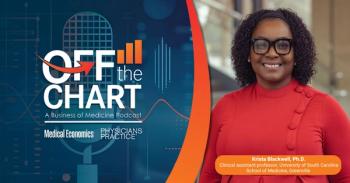
Why ICD-10 needs modernization
Key Takeaways
- AI and machine learning are driving rapid changes in healthcare, exposing limitations in existing frameworks like ICD-10 codes.
- ICD-10 codes, essential for standardizing diagnoses, are outdated, leading to issues like incomplete patient stratification and delayed reimbursement.
Rapid technology advancements is creating gaps ICD-10 codes can’t fill
Technology advancements, driven by artificial intelligence and machine learning, are forcing healthcare to change constantly and rapidly. The vast benefits driven by this innovation have revealed shortcomings for which aspects of our health care infrastructure cannot keep pace. Among these are foundational frameworks, such as the International Classification of Diseases codes, a key linchpin of our health care system.
The ICD-10
This “ICD-10 gap” has tangible consequences: incomplete patient stratification, limited recognition of comorbidities, poor identification of adverse events, skewed prioritization toward common diseases, and both regulatory and reimbursement delays for innovative therapies. Evolution is warranted, and needed, to code emerging conditions, new therapies, and technology-assisted procedures. We need universal frameworks that support the continued advancement of AI, which will power new frontiers of real-world evidence and precision medicine. In the short term, however, there are implementable, technology-driven data solutions available to fill the gaps researchers and clinicians face.
An example from ophthalmology
Current classifications fail to capture the full spectrum of patient experiences and clinical nuances for accurate ophthalmologic diagnosis. Better utilization of unstructured, real-world data from the electronic health record has become instrumental in bridging these gaps. By integrating structured EHR data, like ICD codes, with unstructured clinical notes (e.g., physician assessments, test results, and imaging) in advanced population health data solutions, users can obtain a more holistic and nuanced understanding of ophthalmic conditions. We are now able to attain a more robust understanding of ophthalmic conditions, paving the way for enhanced research for drug development and ultimately, improved patient care.
Unstructured EHR clinical data adds depth to the insights from ICD codes by giving detailed views of patient symptoms, diagnostic tests, and treatment outcomes, which is critical for accurate patient diagnosis in complex fields such as ophthalmology. Together, clinical notes and ICD codes enable a more comprehensive approach to research and patient care, helping the field of ophthalmology harness the power of technological advancement happening all around us.
Until reform or advancement to ICD-10 occurs, innovative population health data solutions can provide a crucial bridge. By leveraging unstructured EHR data and advanced AI, these tools help researchers, clinicians, and life sciences companies unlock deeper insights into complex conditions. Supporting the study of geographic atrophy (GA) for example, which is challenging due to its chronic nature, recent lack of FDA-approved treatments, and underreporting of the disease due to inaccurate ICD coding, is a proven application to solve for incomplete patient identification. By applying AI-driven natural language processing and machine learning models to unstructured EHR clinical notes and ophthalmic images, researchers in one instance were able to identify over 470,000 additional GA patients beyond those captured by ICD codes to support more accurate modeling of GA prevalence and progression.
Sujay Jadhav is CEO of
Newsletter
Stay informed and empowered with Medical Economics enewsletter, delivering expert insights, financial strategies, practice management tips and technology trends — tailored for today’s physicians.
















